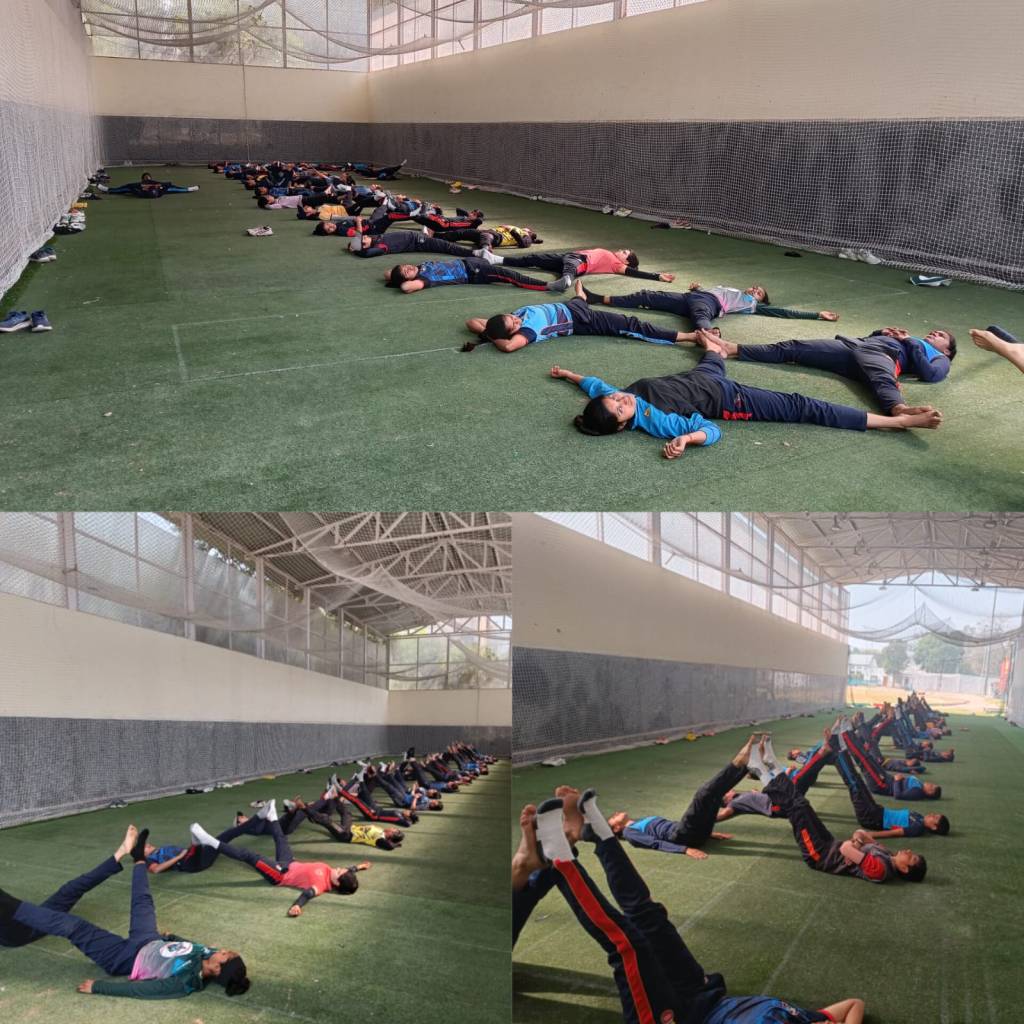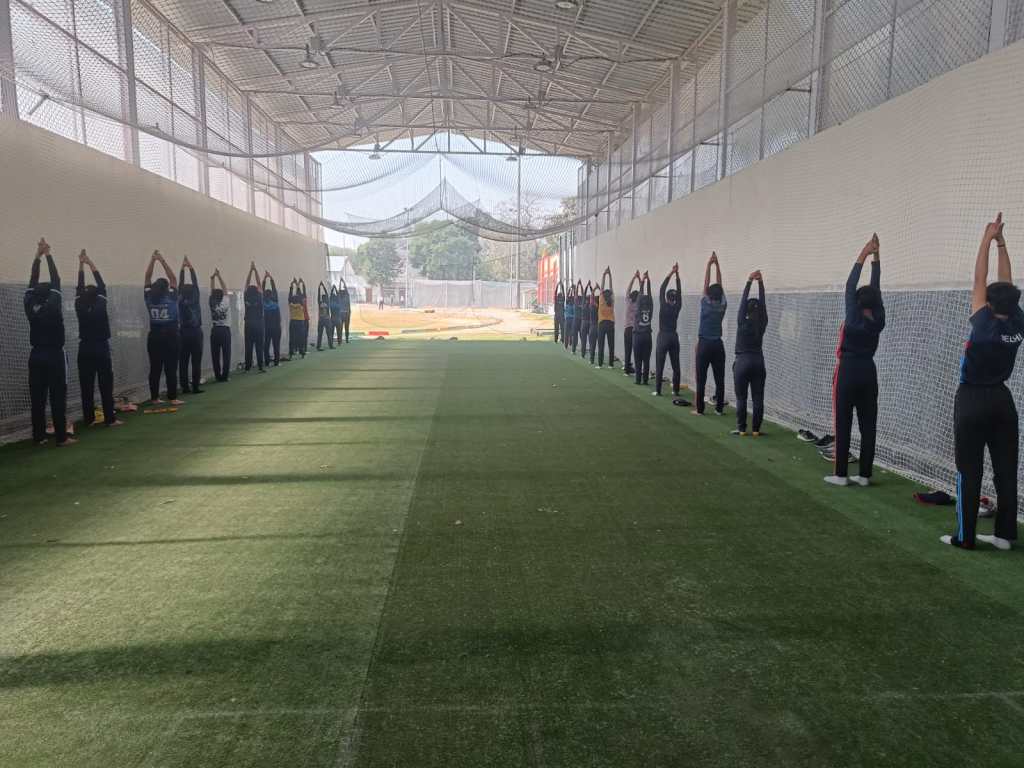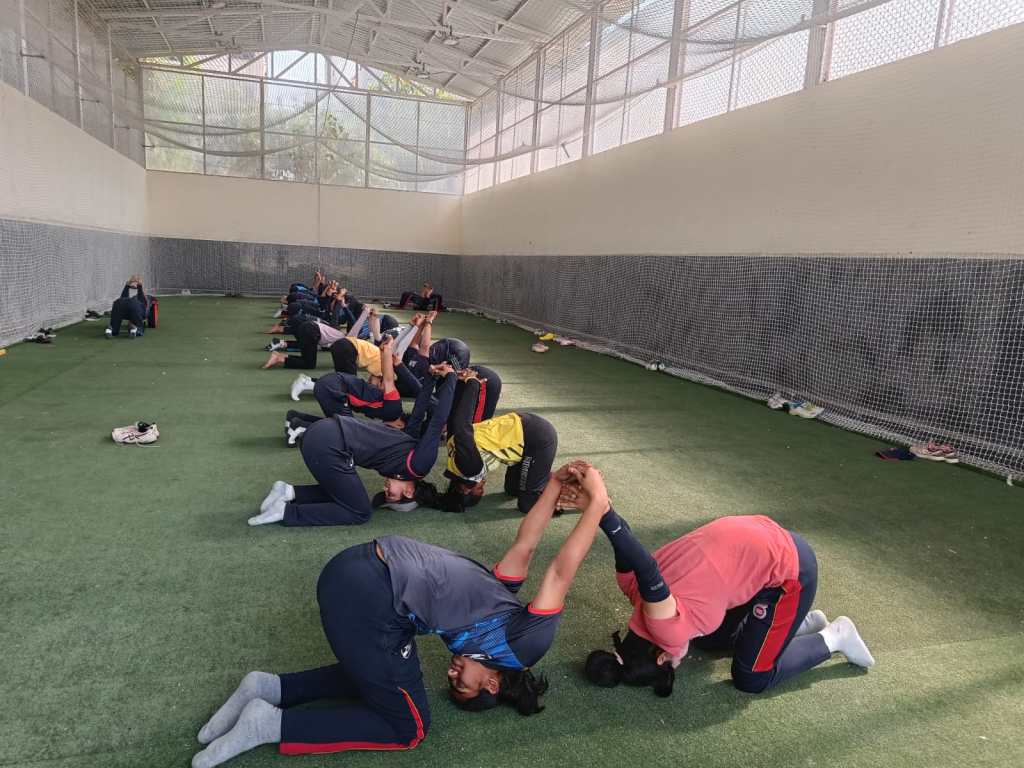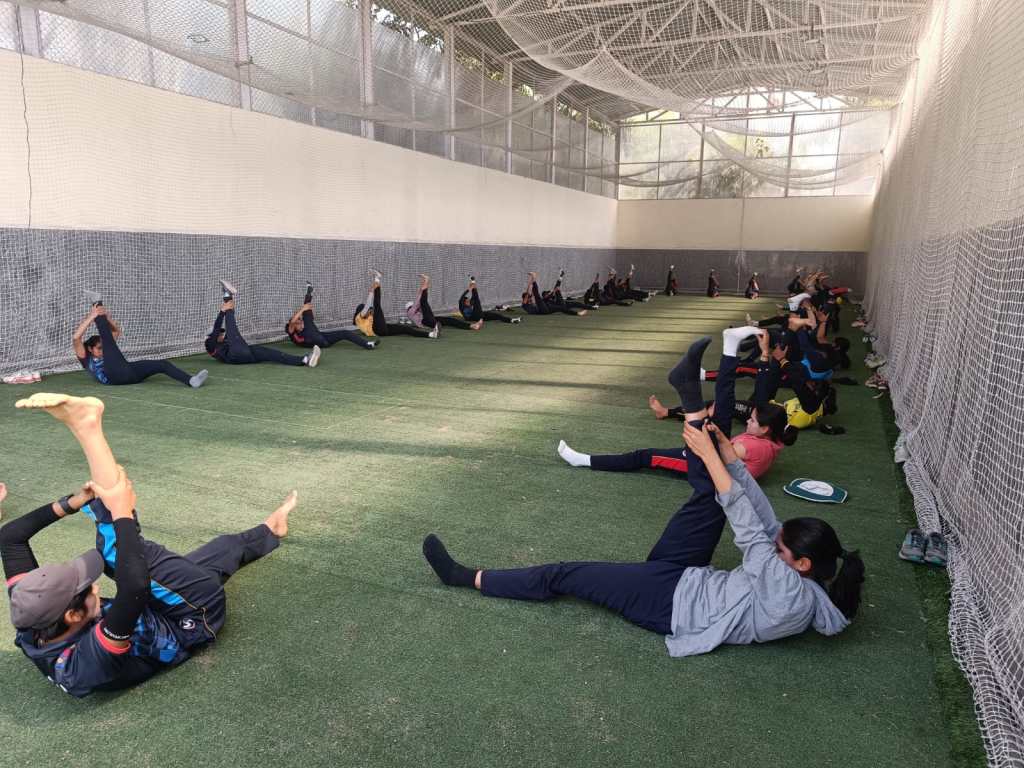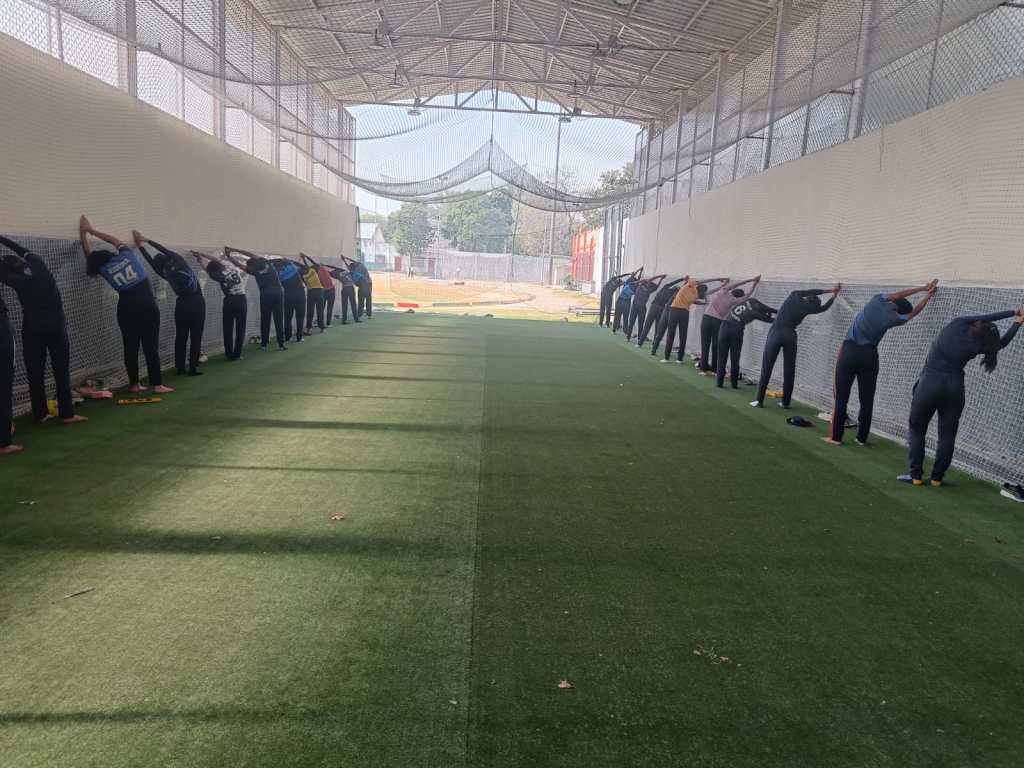Here is my poetic rendition to explain these beautiful pictures:
“The anatomy in silence brings solitude among masses” by UC
No, this isn’t your typical yoga class in a studio. Rather, it’s a dynamic training session spanning an hour and fifteen minutes in high performance setting. Despite the familiar chatter and lively demeanor of young girls, its mesmerising for me to see them so focussed as each individual commits to pushing their limits to achieve their best. They feel pushed in absolute silence.
While some may perceive it as simply a stretching session, whereas I see it as a training session encompassing isometric, concentric, and eccentric contractions, along structural alignment, fluid movement, and nuanced postural adjustments (circuitry). This holistic approach not only cultivates meditative states but also fosters resilience, concentration, and strength.
Despite fulfilling all the requisites of a training session, participants often regard it as a refreshing recovery – a break from running, jumping, etc under bright sun. Traditionally, activities involving body weight are categorized as stretching or light training, however, the session offers a multifaceted experience that challenges both body and mind.
“Burn the skill into the circuitry” – a phrase by my favourite neuroscientist Dr David Eagleman! Even though he said in the context of brain however it applies to all movement sports.
There exists ample evidence indicating that our musculoskeletal system is intricately designed for movement. When we engage in specific sequences of movement, such as bowling, it transforms into a skill set. Similarly, when we subject the same system to resistance training in the gym, the act of moving under load becomes a skill for the brain. Essentially, skill is the synchronization of the brain with our musculoskeletal system to execute movements in a particular sequence.
Therefore, the overarching principle should focus on training our system to bolster its circuitry rather than fragmenting the circuitry into individual components and strengthening each one independently. While it’s necessary to isolate body parts for training purposes, we should not isolate muscles. Example: a pumped up shoulder or biceps creates hindrance to cricketing movements rather than facilitating real time movements.
Consider resistance training: Can we isolate the glute max without imposing strain on the lower back, hamstrings, or quads? Similarly, can we target the shoulders (deltoids) without engaging the scapula, upper back, chest, biceps, triceps, forearm, or thoracis?
The crux of the matter lies in the fact that we can never move a muscle in isolation; it always involves a group of muscles. So what sets resistance training apart from what you see in these pictures is relatively straightforward, even though both involve muscle contractions:
a) In the training session, we are moving the system to reinforce the circuitry by synchronizing the upper limb with the lower limb without excessively burdening any particular muscle group.
b) This synchronization not only strengthens the circuitry but also rectifies the musculature’s alignment. This alleviates the strain on overactive muscles and activates inhibited ones to restore balance within the circuitry.
Delving deeper into the dynamics of the musculoskeletal system, how can we achieve:
- Equilibrium in force generation between the right and left sides?
- Integration of lower body power with upper body?
- Reinforcement of the supportive intermuscular system?
- Sustained activation of the entire musculature?
- Alleviation of strain on overactive muscles and activation of underactive ones?
Yet, do we approach our training with such considerations? Regrettably, no.
We often focus solely on enhancing muscle strength without addressing issues like alignment, structural design, or proportionality, akin to attempting to build a more robust engine without attending to tire alignment, car design, or size.
